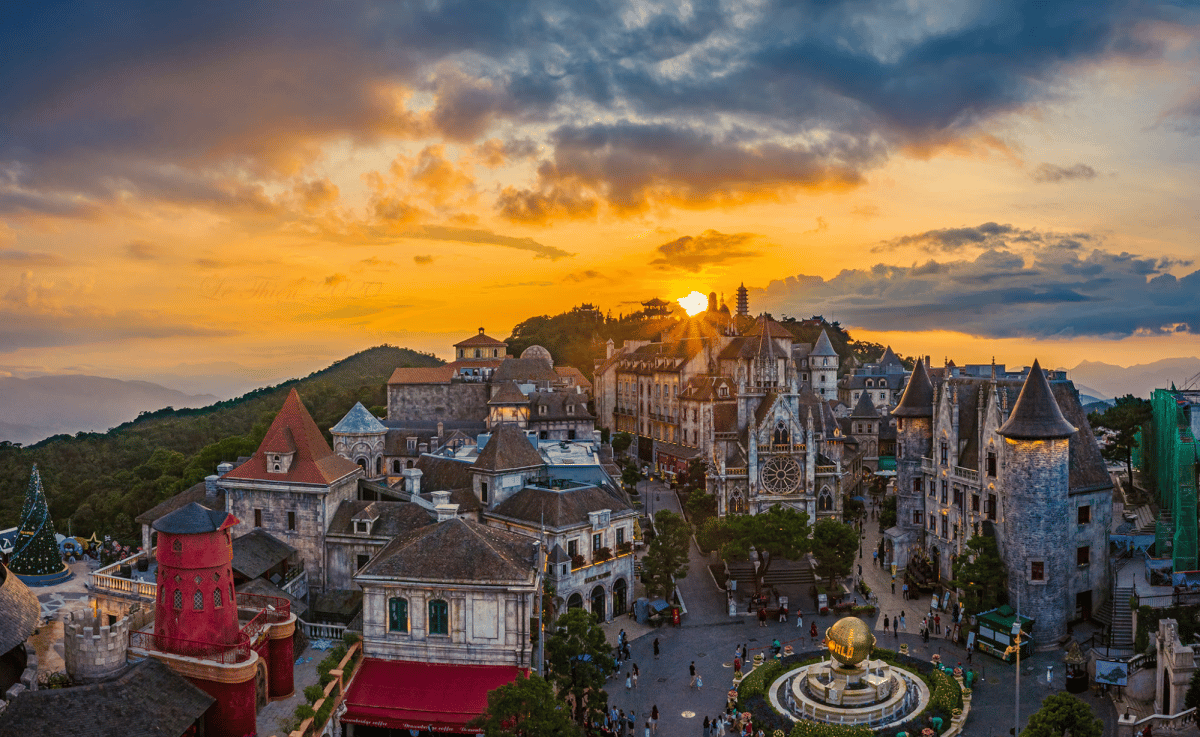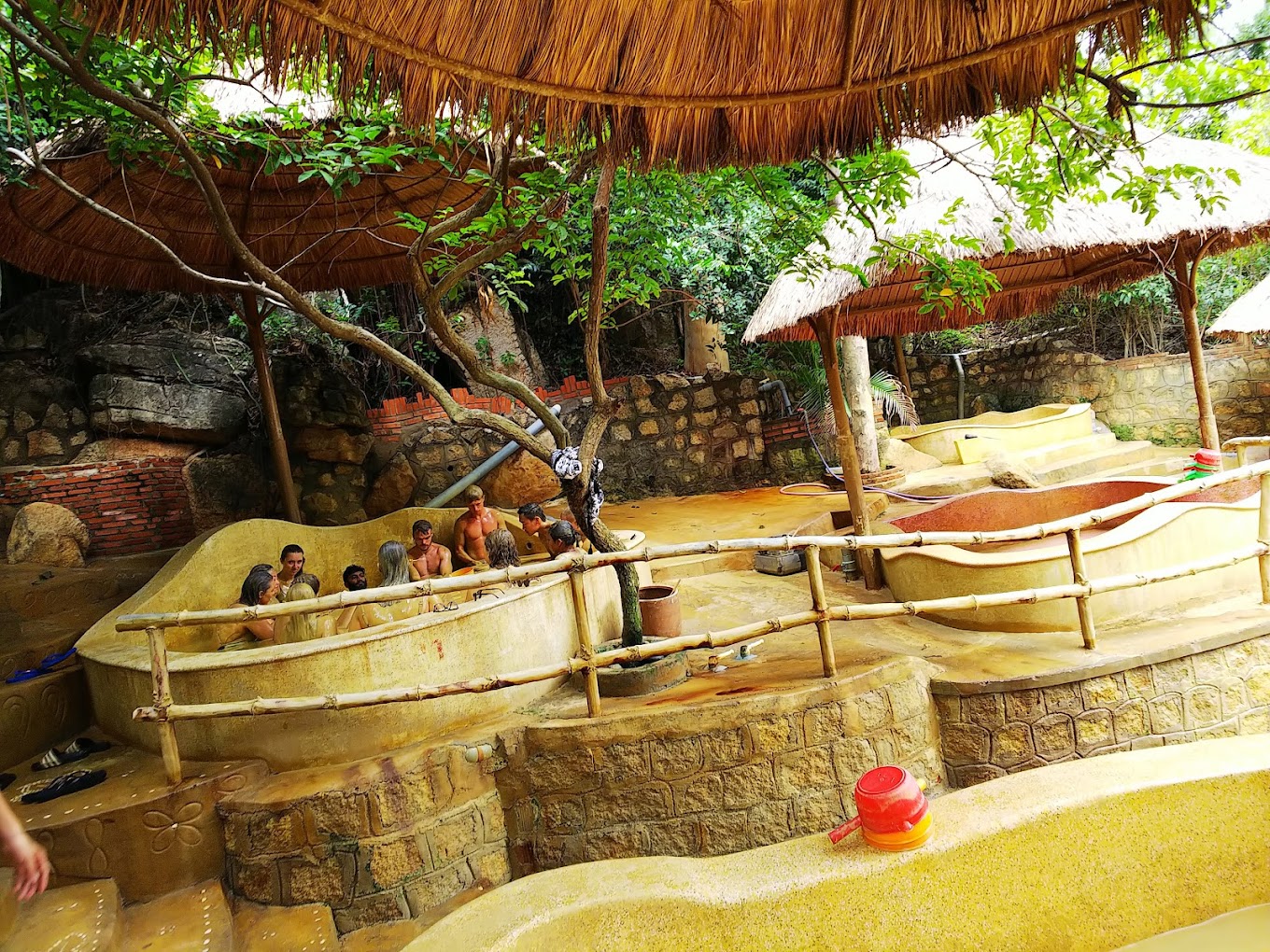Tran Quoc Pagoda has long been a renowned tourist destination and Buddhist center in Vietnam. Thanks to its sacredness and thousand-year history, visiting Tran Quoc Pagoda has become a spiritual belief for many people. Let’s explore Tran Quoc Pagoda in the capital with VnCarRentals.com’s!
Table of Contents
Who is worshipped at Tran Quoc Pagoda?
If you’re planning a spiritual tourism trip to visit the temples in Hanoi, you can’t miss Tran Quoc Pagoda. Once the center of Buddhism in Thang Long during the Ly and Tran dynasties, Tran Quoc Pagoda on West Lake has now become an attractive spiritual destination, drawing many tourists to contemplate the scenery and participate in annual rituals.
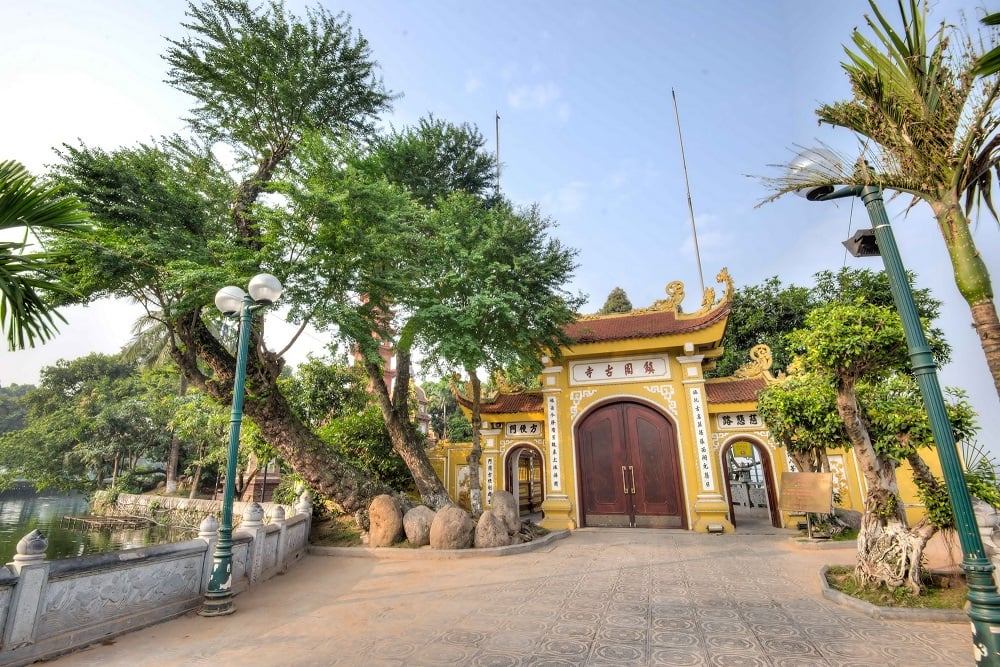
Tran Quoc Pagoda follows the Northern Buddhist tradition. Inside the temple, there are altars dedicated to Buddha Amitabha, Shakyamuni Buddha, and Bodhisattva Quan Am. The pagoda also has altars for Quan Binh, Quan Vu, Chu Thuong, Duc Ong, and other deities.
Tran Quoc Pagoda – Where is it? How to get there
Located on the eastern side of West Lake’s island, Tran Quoc Pagoda is the oldest and most sacred pagoda in Hanoi, with a history of up to 1500 years. Tran Quoc Pagoda is situated at 46 Thanh Nien Street, Yen Phu Ward, Tay Ho District, Hanoi.
Just about 4km from the city center, you can easily get to Tran Quoc Pagoda by various means of transportation such as motorbike, car, taxi, Grab, or bus. If you choose to travel by bus, you can take either bus route 33 or route 50, both of which have stops very close to the pagoda.
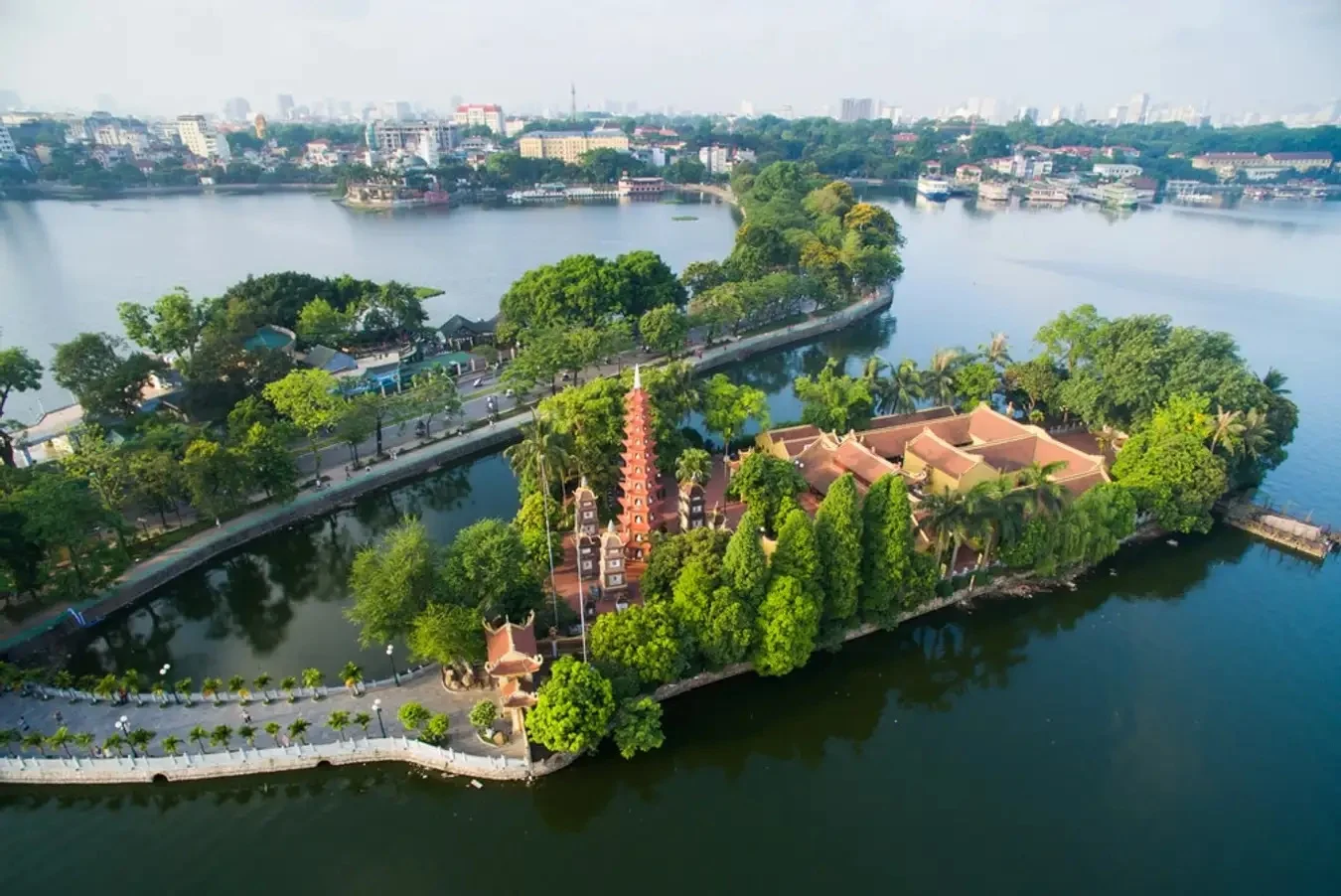
Moreover, to facilitate your visit to Tran Quoc Pagoda and other tourist destinations in Hanoi, the private car rental service in Hanoi provided by VnCarRentals.com is the most popular choice. With door-to-door service and drivers waiting for you while you explore, it will help you save time and money during your trip.
Opening hours and ticket prices at Tran Quoc Pagoda
Tran Quoc Pagoda welcomes visitors for sightseeing and worship from 8:00 AM to 4:00 PM daily. On the 1st and 15th day of every lunar month, the pagoda is open from 6:00 AM to 6:00 PM, and on the Lunar New Year’s Eve, the pagoda is open all night.
Tran Quoc Pagoda does not charge an entrance fee for both Hanoi residents and tourists. Therefore, you are free to visit, admire the scenery, and pay respects at the pagoda.
The history of Tran Quoc Pagoda
According to historical records and documents, Tran Quoc Pagoda was built in 541 during the Pre-Ly Dynasty period and was originally named Khai Quoc Pagoda. Initially, the pagoda was located on the land of Yen Hoa village, which is present-day Yen Phu village.
In 1440, King Le Thai Tong changed the name of the pagoda to An Quoc Pagoda, wishing for the country’s peace and longevity. In 1615, under the reign of King Le Kinh Tong, the pagoda was relocated to the Yen Phu dike area, built on the old foundation of Han Nguyen Temple from the Tran dynasty and Thuy Hoa Palace from the Ly dynasty. In 1639, Lord Trinh ordered the construction of corridors on both sides and the restoration of the triple gate.
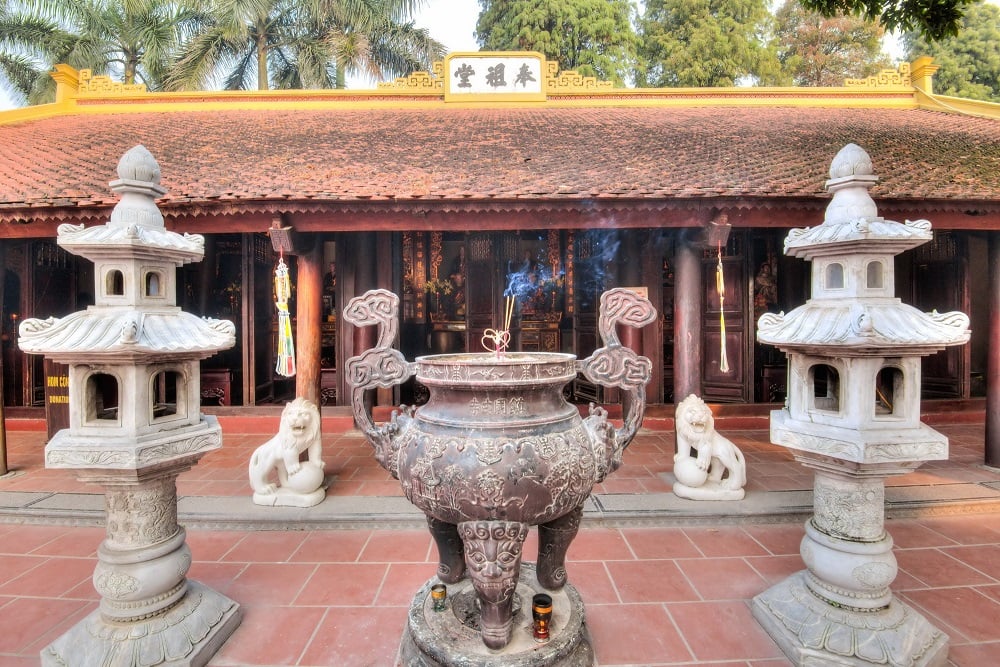
During the reign of King Le Hy Tong, the pagoda was once again renamed Tran Quoc Pagoda. The pagoda was adorned with magnificent bell casting, statues, and renovations at the beginning of the Nguyen dynasty. In 1821, King Minh Mang visited the pagoda and donated 20 silver taels for expansion and renovation. In 1842, King Thieu Tri donated 200 officials’ salaries and a large gold coin, and also changed the name of the pagoda to Tran Bac Pagoda. However, the people still continued to call it Tran Quoc Pagoda, so this name has been preserved until today.
Despite various ups and downs, Tran Quoc Pagoda has been preserved, maintained, and embellished by later generations to build its solemn beauty.
The value and significance of Tran Quoc Pagoda
According to historical records, during the French colonial period, the Far Eastern Institute conducted in-depth studies and highly praised this ancient pagoda. Particularly, Tran Quoc Pagoda was ranked among the top 10 historical monuments in Indochina. Despite the various changes throughout history, the pagoda has been protected, preserved, and maintained, retaining its architectural and cultural beauty.
In 1962, Tran Quoc Pagoda was recognized by the Ministry of Culture and Information as a National Historical and Cultural Relic. For Vietnamese Buddhism, Tran Quoc Pagoda is truly a source of pride, a precious heritage possessing beauty in architecture, history, and culture. Until today, it remains one of the most sacred Buddhist sites and a famous spiritual destination in Hanoi, attracting numerous tourists, monks, and Buddhists who come to pay homage.
Explore Tran Quoc Pagoda: What to see?
Discovering the architecture of Tran Quoc Pagoda
The architecture of Tran Quoc Pagoda reflects Eastern motifs and natural landscapes arranged according to the strict principles and order of Buddhism. After numerous renovations, Tran Quoc Pagoda now covers an area of over 3000m2 with three main buildings: the Main Hall, Upper Hall, and Front Hall connected in a C-shape.

The Front Hall faces west and sits in the center of the temple grounds. The Main Hall and Upper Hall have two long corridors on each side. Behind them is a three-room house with overlapping roofs, followed by a bell tower located on the central axis of the main courtyard. To the left is a house with 14 steles preserving many cultural and historical values, and to the right is the ancestral house. In the 18th century, during the reign of King Ly Thanh Tong, many towers were added behind Tran Quoc Pagoda.
In 1998, the Head of Tran Quoc Pagoda, Venerable Thich Thanh Nha, constructed the Six-Storey Lotus Tower prominently in the ancient tower garden. The tower is symmetrical with the Bodhi tree – a gift from Indian President Rajendra Prasad during his visit to the capital in 1959. With its immense historical value and unique architecture, in 1989, Tran Quoc Pagoda was honored as a National Historical and Cultural Relic.
Offering incense and praying for peace
Tran Quoc Pagoda is a sacred place for people to pray for luck and peace. Going to Tran Quoc Pagoda for worship has long been a tradition for Hanoians on every Lunar New Year or the 1st and 15th day of every lunar month. Whether visiting or worshiping on any occasion, you should prepare incense, offerings, and meticulous prayers at the altars in the pagoda to show your sincere respect. Some common prayers at the pagoda include prayers for peace, prayers for ancestors, and prayers for blessings.
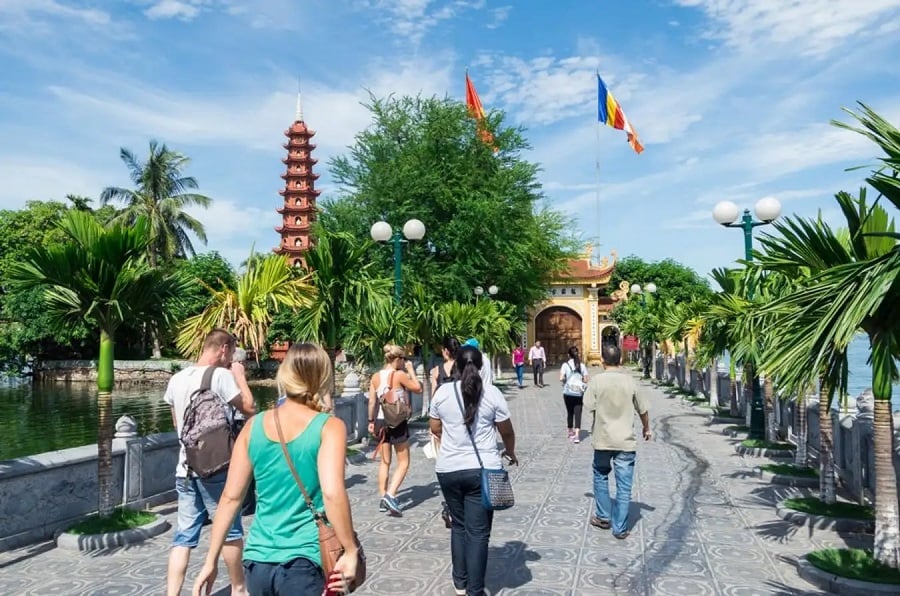
Admiring the Bodhi tree at Tran Quoc Pagoda
Whenever Tran Quoc Pagoda is mentioned, people immediately think of the large Bodhi tree derived from the Great Bodhi Tree at the Jetavana Monastery. This is where Shakyamuni Buddha practiced meditation 25 centuries ago. The Bodhi tree at Tran Quoc Pagoda holds significant spiritual meaning. It symbolizes compassion and forgiveness towards humans and represents the wisdom of the Buddha. Many tourists come to Tran Quoc Pagoda every year to worship, pilgrimage, and pray to this Bodhi tree.

Over nearly 60 years since it was donated by Mr. Prasat, the Bodhi tree has been carefully and meticulously cared for by the resident monks of the pagoda to remain as fresh and vibrant as it is today. The shade of the Bodhi tree makes the temple scene picturesque, peaceful, and the air is incredibly fresh and cool.
Admiring the unique beauty of Buddha and Bodhisattva statues
Visitors can admire the unique beauty of Buddha and Bodhisattva statues in the Bao Thap (Precious Tower) at Tran Quoc Pagoda or in the Main Hall. The eleven-story Bao Thap tower covers an area of about 10.5m2. Inside the tower, there is a statue of Amitabha Buddha made of precious stone. There are also about 66 other statues inside the tower. On top of the tower is a nine-story lotus-shaped tower made of glittering precious stones, resembling a blooming lotus emitting a fragrant scent.
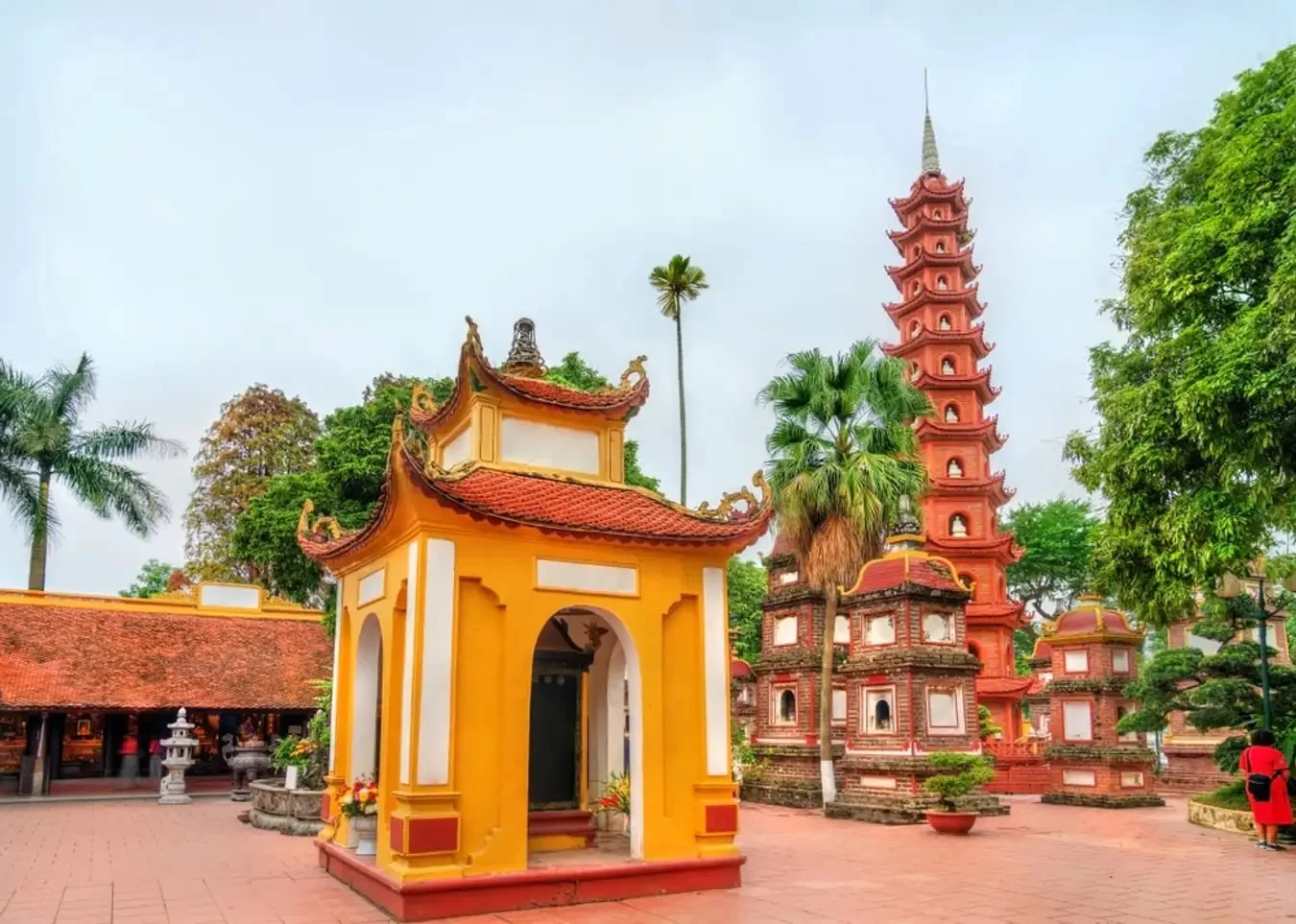
After visiting the Bao Thap tower, visitors can move to the Main Hall for worship and pilgrimage. Here, there are many beautifully crafted statues of generals and Buddha. The most prominent is the statue of Shakyamuni Buddha, adorned with gold leaf. Other Buddha statues are cast in shining bronze.
Famous tourist attractions near Tran Quoc Pagoda
To have more experiences during your trip to Hanoi, you should combine a visit to Tran Quoc Pagoda with nearby attractions. Here is a list of famous destinations near the pagoda that you can consider:
Quan Thanh Temple
A spiritual destination in Hanoi that you cannot miss is Quan Thanh Temple – one of the “four guardians” of the Thang Long Imperial Citadel. Despite the passing of time and many historical periods, Quan Thanh Temple still retains its cultural beauty and unique architecture, adding to the ancient charm of the capital city.
Thang Long Imperial Citadel
Integral to the development of ancient Thang Long – Hanoi, the Thang Long Imperial Citadel is one of the historical sites that attracts many tourists. Particularly important in Vietnam’s historical relic system, the Thang Long Imperial Citadel features prominent structures such as Doan Mon Gate, Bac Mon Gate, Kinh Thien Palace, and the archaeological site.
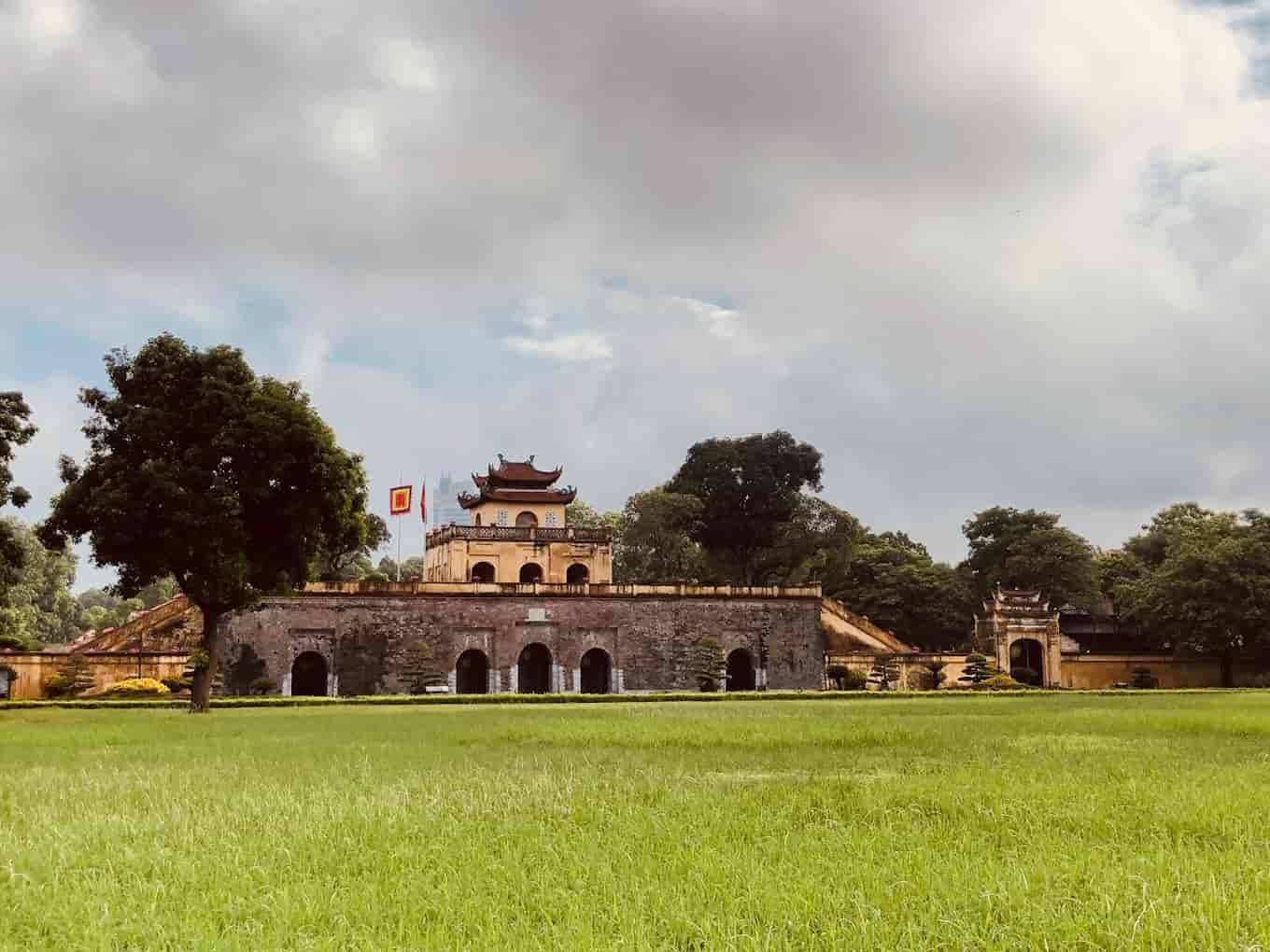
Ho Chi Minh Mausoleum
A visit to the Ho Chi Minh Mausoleum is a must for any trip to Hanoi. It is the final resting place of the beloved leader of the nation. Surrounding the mausoleum are lush green bamboo trees, creating a peaceful and serene atmosphere. The mausoleum is open to visitors on Tuesday, Thursday, Friday, Saturday, and Sunday mornings. In addition to visiting, you can witness the flag-raising and flag-lowering ceremonies at scheduled times during the day. A small note when visiting Ho Chi Minh Mausoleum is to dress neatly and avoid bringing electronic recording devices.
Hanoi Old Quarter
Exploring the Hanoi Old Quarter, admiring the ancient houses, and enjoying local specialties are experiences not to be missed when traveling to Hanoi. The Old Quarter is located to the north and west of Hoan Kiem Lake. Each street specializes in a particular product, where you can shop, take photos, and enjoy local cuisine. Additionally, tourists should spend time savoring the Old Quarter’s culinary delights, such as Cha Ca La Vong (La Vong grilled fish), Bun Cha Dinh Liet (Dinh Liet vermicelli with grilled pork), and Pho Bat Dan (Bat Dan beef noodle soup).
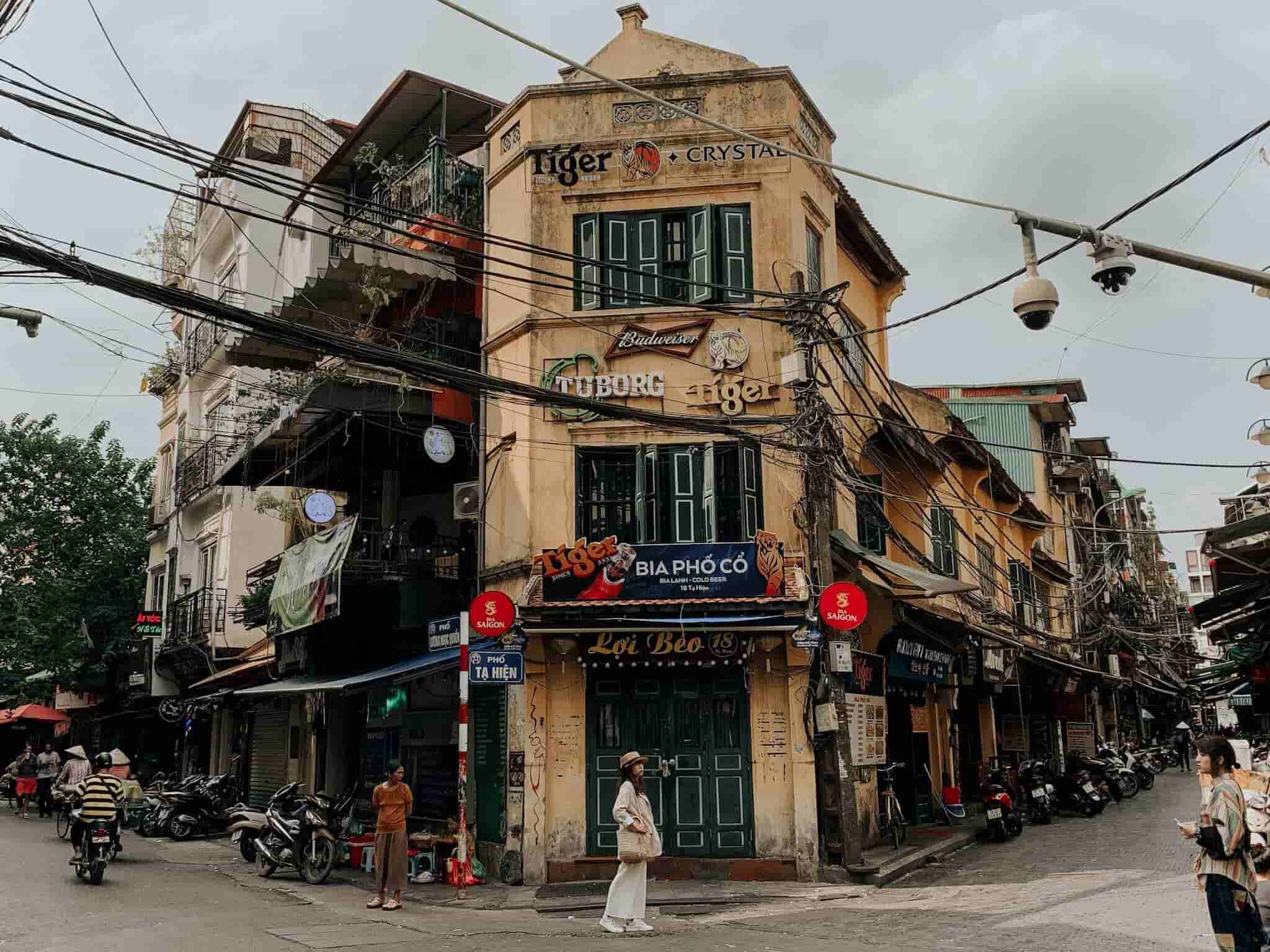
Tay Ho Temple
Tay Ho Temple, also known as the Princess Lieu Hanh Temple, is one of the famous spiritual tourist destinations in the capital city. Tay Ho Temple boasts unique architecture, with each detail intricately carved, reflecting Vietnamese culture. Many people choose to visit Tay Ho Temple for sightseeing, taking photos, and praying for health, prosperity, and success.
Visiting the Tran Quoc Pagoda area at West Lake without enjoying the delicious cuisine of Hanoi would be incomplete. Some famous dishes you must try include West Lake shrimp cakes, vermicelli with fried tofu and shrimp paste, savory donuts, etc. Along with that, combine your visit with other famous tourist destinations near Tran Quoc Pagoda: Hanoi Opera House, Temple of Literature, Dong Xuan Market, Thang Long Imperial Citadel.
When visiting Tran Quoc Pagoda, there are a few things to keep in mind
- Tran Quoc Pagoda is the most beautiful and sacred ancient pagoda in the capital city. Therefore, it is always bustling with tourists and worshippers. The 1st and 15th days of the lunar month are particularly crowded. Additionally, during the Lunar New Year, many people gather at the pagoda to pray for luck and blessings. You can visit the pagoda at any time, but to fully appreciate its tranquil beauty and seek peace and quiet at the Buddha’s gate, it’s best to visit on regular weekdays.
- The pagoda is a sacred place, so you should choose attire that is modest and respectful, avoiding revealing or inappropriate clothing. Maintain silence and avoid making noise or behaving rudely to ensure reverence when visiting the pagoda.
- Remember to observe proper behavior and etiquette while visiting the pagoda. Follow the instructions of the staff and respect the sanctity of the place.
Tran Quoc Pagoda, with its towering Bao Thap stupa shining brightly from afar, stands as a prominent landmark of the history and culture of Thang Long – Hanoi since ancient times. Through the ups and downs of history, Tran Quoc Pagoda remains an ideal spiritual tourist destination in the journey of exploring the capital city, deserving to be a stopping point for travelers whenever they visit Hanoi.
